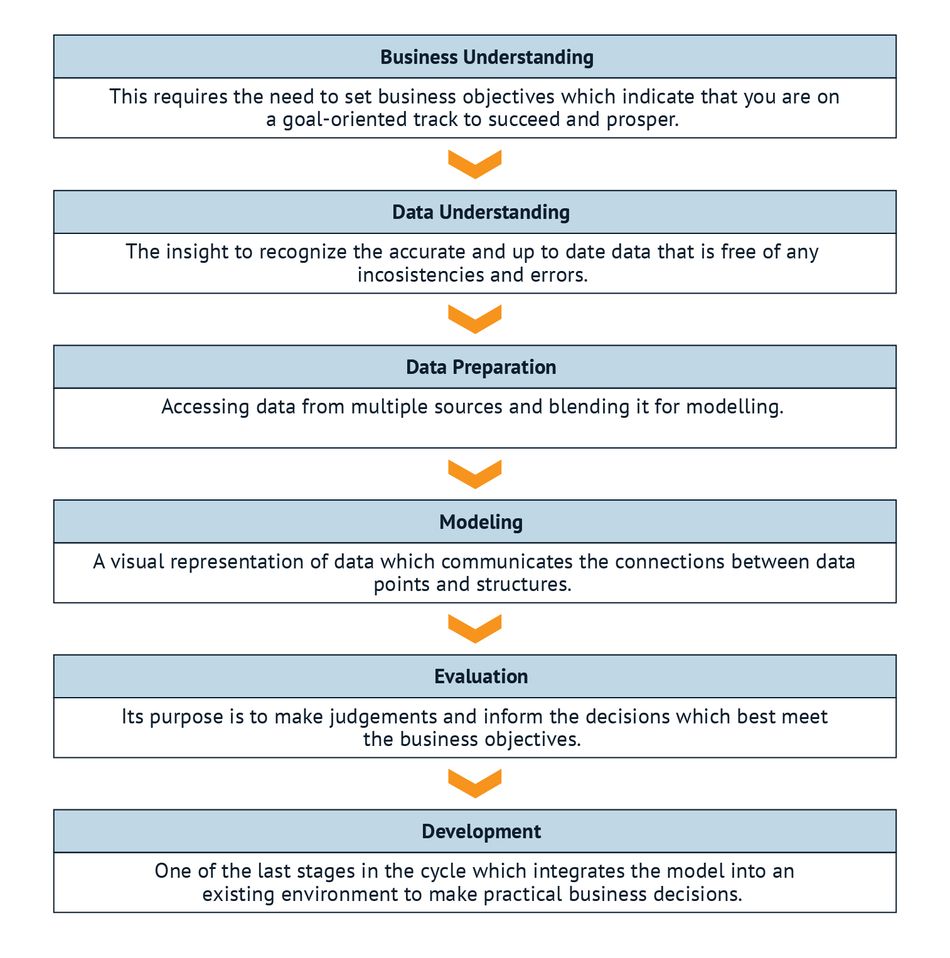Data Science and AI-Driven Real-Time Analytics
Article 4 of Bringing Intelligence to the Edge Series: AI is proving to be a more precise and time-efficient tool in processing the big data crunch by recognizing patterns and noticing inconsistencies in real-time.

This is the fourth article in a 6-part series featuring articles on "Bringing Intelligence to the Edge". The series looks at the transformative power of AI in embedded systems, with special emphasis on how advancements in AI, embedded vision, and microcontroller units are shaping the way we interact with technology in a myriad of applications. This series is sponsored by Mouser Electronics. Through their sponsorship, Mouser Electronics shares its passion and support for engineering advancements that enable a smarter, cleaner, safer manufacturing future.
Most modern consumer-driven industries accumulate large volumes of data, but without a filtering mechanism that maps, charts, and trends data models, the raw data has little to no utility. Traditional analytical mechanisms are no longer up to the task—the sheer amount of data and the speed at which it’s being accumulated has made it economically and operationally necessary to scale up analytical capacity using data science.
The Internet of Things (IoT) is constantly collecting data, and the organization, distribution, and analysis of all this data is the new frontier of artificial Intelligence (AI). While conventional data analysis methods are still being implemented, AI is proving to be a more precise and time-efficient tool in processing the big data crunch. AI can recognize patterns and notice inconsistencies in real-time. AI algorithms can save significant time and energy by compiling data from multiple sources and presenting it with a uniform, consistent approach. AI and machine learning can substantially improve secure and predictive analytics operations in the data center and beyond, anticipating and even preventing potential issues before they become problems. AI can restructure data collection and analysis operations in real-time and reduce unanticipated network interruptions. The marriage of AI and data science can improve data set structuring, help reach conclusions and significantly enhance IoT operations.
Data Science and Machine Learning
Data science is the integrated approach of extracting insights from growing volumes of data using various scientific methods, algorithms, and processes. Data science is driven by software that recognizes hidden patterns within unprocessed data and draws conclusions from those patterns. These valuable insights help facilitate corporate decision-making by interpreting problems analytically and generating viable solutions.
Cross-Industry Standard Process for Data Mining (CRISP-DM) is a process model that provides an overview of the data science life cycle. It’s essentially a framework that assists in planning, organizing, and implementing a data science project. CRISP-DM consists of the steps in Figure 1:
Machine learning is a branch of AI dependent on models to perform autonomous tasks without required extensive programming. It relies on statistical techniques or algorithms that allow users to make predictions and/ or decisions based on historical data. Data scientists utilize technologies like machine learning and AI to examine data and make predictions about imminent developments and potential issues, significantly reducing the need for human intervention. When critical thinking encounters machine-learning algorithms, data science can help achieve better insights, guide efficiency efforts, and inform predictions. The goal is for businesses to benefit from data science to make progressive decisions and create more innovative products and services.
What Is Data Analytics?
Data analytics is the science of scrutinizing raw or unprocessed data to derive meaning so it can be applied to decision-making. Data analytics employs several modern tools and techniques that help to structure data and make it understandable.
Several preliminary steps need to be applied in the process before data analytics can begin:
Data needs to be collected from a variety of sources.
Data needs to be interpreted correctly so it may be accurately organized and grouped.
Data needs to be examined to eliminate any replications or transcription errors.
Data may be managed by tables and/or spreadsheets. Data analytics can be subdivided into four main categories (Figure 2): descriptive, diagnostic, predictive, and prescriptive.
Real-time analytics is the process of preparing, assessing, and analyzing data as it becomes available. Coupling real-time analytics with AI has provided businesses with fresh and revealing insights into the consumer experience. It has provided support personnel and IT the opportunity to act preemptively rather than react, resolving potential issues before endpoint users even realize there is an issue to report. The combination of AI and real-time analytics has completely transformed consumer and consumer support experiences.
Endpoint Analytics of Things
According to the analytics firm International Data Corporation (IDC), 45% of data collected from IoT devices needs to be analyzed nearer to the endpoint (i.e., closer to the device itself) to optimize overall efficiency rather than transmitted to the cloud.[1] Shifting away from the cloud has several potential advantages: Transferring data to the cloud can be costly, as it requires significant bandwidth and power to support large and potentially lengthy data transmissions. Potential latency issues are also a factor; as the time expended during transmission increases, so does the need for higher server capacities to handle all incoming data. Situations may also arise where IoT devices lack a stable internet connection, and decisions must be made at the endpoint. Solutions that can support the consumer experience using analytics at the endpoint are often required.
Analytics of Things (AoT) is a term used to describe the analysis of data generated by IoT devices. AoT makes it possible to operate business intelligence within an application rather than a data warehouse. It also assists in understanding patterns, detecting anomalies, predicting potential issues, setting maintenance intervals, and optimizing processes.
Over the years, organizations have relied on data analytics based on a centralized architecture for their data-driven planning and visions of the future. The data is increasing every second, and there is a requirement for a revolutionary approach to overcoming data transfer latency, improving privacy, and meeting customer expectations. The real-time response has especially become necessary after the convergence of AI, 5G, and IoT. Distributing intelligence across the end of the network provides an opportunity for more efficient data analytics and real-time decision-making at the endpoints with little to no latency. Performing these functions directly on endpoint devices with low processing capabilities is referred to as endpoint data analytics (Figure 3).
The Data Science Support System
Various technologies and sensors facilitate the processing of data analytics at the endpoint. Sensors are required not only to gather and accumulate data but also to assist in assessing and understanding the surrounding environment. Commonly implemented types of sensors include GPS for determining location and thermometers and barometers for measuring temperature and pressure. Cameras, lasers, and radar/ sonar can also be used to detect people and/or objects nearby.
Communication technologies such as Wi-Fi and 5G assist in gathering and transmitting data. The data is then fed into data science algorithms that play a central role in assessing the data and recommending potential courses of action. In certain use cases, the outcome of the analytics performed at the endpoint can even be used to make automatic adjustments to a device’s plan of action. An autonomous vehicle, for example, may change routes depending on traffic data collected from other vehicles in the same area or on weather and/or road conditions being monitored by onboard sensors. Data analytics can help categorize potential actions and adjustments into classes to improve the overall decision-making process; for example, the autonomous vehicle can classify potential actions as operational (e.g., optimizing the route for better road and weather conditions) or tactical (e.g., optimizing the route to reduce travel time).
Leveraging the power of predictive maintenance, intelligent sensors embedded in factory equipment can collect data on optimal operations to help manufacturers reduce downtime and avoid potential revenue loss. Anticipating and acting on potential out-of-service issues means that plants can run at peak efficiency
Where AI and Data Science Go from Here
Traditional business intelligence tools are not structured to process vast amounts of unstructured data. Data science utilizes more advanced tools to assist in sifting, grouping, and analyzing large volumes of data from different sources across multiple interconnected fields. Take marketing, for example: Exploring essential demographic factors like a customer’s age, orientation, location, and behavioral patterns can assist in creating highly targeted advertising campaigns. These ads provide more precise recommendations by relying on browsing and purchase history to evaluate the customer’s inclination toward buying a specific product. In banking, monitoring unusual customer behavior can aid in detecting and exposing fraud. By scrutinizing and assessing a patient’s medical records, data science may help predict and prevent potential medical problems.
Conclusion
Developments in data analytics and AI have transformed the consumer support experience. Real-time analytics respond to the data collected immediately (when its value is at its peak), and data analytics unlock the almost unlimited potential of that data, increasing overall business value and potentially enabling enterprises to secure a high position in the marketplace. Businesses in all sectors rely on machine learning models to make more accurate predictions and effective decisions, thereby improving production efficiency and assisting in overcoming potential security issues in communications between devices and the cloud. Endpoint AI has enhanced the entire process by speeding up the work, providing better results, and improving business decision-making.
This article is based on an e-magazine: Bringing Intelligence to the Edge by Mouser Electronics and Renesas Electronics Corporation. It has been substantially edited by the Wevolver team and Electrical Engineer Ravi Y Rao. It's the fourth article from Bringing Intelligence to the Edge Series. Future articles will introduce readers to some more trends and technologies shaping the future of Edge AI.
This introductory article unveils the "Bringing Intelligence to the Edge" series, exploring the transformative potential of AI at the Edge
The first article examines the challenges and trade-offs of integrating AI into IoT devices, emphasizing the importance of balancing performance, ROI, feasibility, and data considerations for successful implementation.
This second article delves into the transformative role of Endpoint AI and embedded vision in tech applications, discussing its potential, challenges, and the advancements in processing data at the source.
The third article delves into the intricacies of TinyML, emphasizing its potential in edge computing and highlighting the four crucial metrics - accuracy, power consumption, latency, and memory requirements - that influence its development and optimization.
The fourth article delves into the realm of data science and AI-driven real-time analytics, showcasing how AI's precision and efficiency in processing big data in real-time are transforming industries by recognizing patterns and inconsistencies.
The article five delves into the integration of voice user interface technology into microcontroller units, emphasizing its transformative potential.
The article six delves into the profound impact of edge AI on system optimization, maintenance, and anomaly detection across diverse industries.
About the sponsor: Mouser Electronics
Mouser Electronics is a worldwide leading authorized distributor of semiconductors and electronic components for over 1,200 manufacturer brands. They specialize in the rapid introduction of new products and technologies for design engineers and buyers. Their extensive product offering includes semiconductors, interconnects, passives, and electromechanical components.

References
[1] How the Edge Computing Layer Helps with Latency, IEEE Innovation at work, [Online], Available from: https://innovationatwork.ieee.org/how-the-edge-computing-layer-helps-with-latency/



